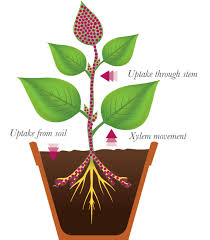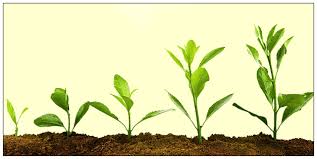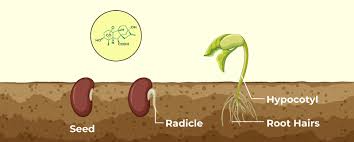It is often observed in a germinating seedling that roots grow in a downward direction while shoots grow upwards. Some flowers bloom during the day but close at night, as though responding to a cycle.
A single rotten apple can hasten the rotting of others in a basket, and leaf fall can occur suddenly. The regulation of cell division and elongation also raises important questions.
These processes are not governed by simple mechanisms but are the result of complex interactions among genetic, hormonal, and environmental controls.
Genes in any species activate at specific times to manage cellular functions and traits. Hormones, a class of powerful natural chemicals, regulate growth and development in both plants and animals.
They influence cellular responses and determine which genes are expressed at specific stages. Environmental conditions such as light and temperature also play vital roles in regulating development. These interactions are central to the content of this article.
Read Also: 15 Medicinal Health Benefits Of Aspidosperma quebracho-blanco (Quebracho Blanco)
Intrinsic and Extrinsic Factors Affecting Plant Growth

Light, water, oxygen, and nutrients are necessary for plant growth and are known as extrinsic factors. While they are essential, intrinsic factors also significantly influence growth.
These include internal genetic instructions and intercellular chemicals known as plant growth regulators. These regulators are naturally occurring, simple compounds that manage various physiological processes in plants.
Plant growth regulators include a wide range of chemical types, such as gases (ethylene), terpenes (gibberellic acid), and carotenoid derivatives (abscisic acid). They are also referred to as phytohormones, plant growth substances, or plant hormones.
Classification of Plant Growth Hormones and Their Effects
1. Plant Growth Promoters: Promote cell division, enlargement, flowering, fruiting, and seed development. Examples include auxins, gibberellins, and cytokinins.
2. Plant Growth Inhibitors: Suppress growth, encourage dormancy, and promote abscission. Abscisic acid is a common example.
Note: Ethylene can function as both a promoter and inhibitor, but generally acts as a growth inhibitor.
Types of Plant Growth Hormones, Their Effects and Agricultural Uses

1. Auxins and Their Agricultural Importance
Auxins were the first growth hormones to be discovered. Observations by Charles Darwin and Francis Darwin on canary grass showed that the coleoptile (a protective sheath) bends toward light, a process called phototropism.
Their experiments concluded that the tip of the coleoptile directed the bending, leading to the isolation of the first auxin by F. W. Went from oat seedlings. Auxin, first isolated from human urine, refers to both natural and synthetic growth-regulating compounds.
Plants naturally produce auxins such as Indole-3-acetic acid (IAA) and Indole butyric acid (IBA). These are located in growing stems and roots and migrate to their target sites. Synthetic forms include Naphthalene acetic acid (NAA) and 2,4-dichlorophenoxyacetic acid (2,4-D).
Effects:
i. Stimulate flowering in crops like pineapple
ii. Aid rooting in stem cuttings
iii. Prevent early fruit and leaf drop
iv. Promote abscission of older leaves and fruits
v. Regulate xylem differentiation and support cell division
Applications:
i. Applied in plant propagation
ii. Induce parthenocarpy (fruit formation without fertilisation)
iii. 2,4-D is widely used as a herbicide to control dicot weeds
iv. Maintains weed-free lawns in horticulture
Note: The apical bud in higher plants restricts lateral bud growth, a phenomenon known as apical dominance. Removing the apical bud enables lateral growth, a practice used in tea plantations and hedgerows.
Read Also: 10 Medicinal Health Benefits Of Astrocaryum aculeatissimum (Tucum)
Gibberellins and Their Role in Crop Growth

Gibberellins were discovered through studies of ‘bakane’ disease in rice, caused by the fungus Gibberella fujikuroi. E. Kurosawa found that sterile filtrates from the fungus replicated disease symptoms, leading to the identification of gibberellic acid as the active compound.
More than 100 gibberellins are known, ranging from fungi to higher plants. They are all acidic and designated GA1, GA2, GA3, etc., with GA3 being the most widely studied.
Effects:
i. Increase stem length in crops such as grapes
ii. Delay fruit senescence to prolong shelf life
iii. Improve fruit shape in apples
Applications:
i. Used in brewing to speed up malting
ii. Increase sugarcane yield by elongating stems
iii. Promote early seed production in young conifers
iv. Trigger bolting in crops like cabbage and beet
Cytokinins and Their Agricultural Benefits
F. Skoog and his team discovered cytokinins while studying tobacco plant callus, which grew only when auxins were combined with yeast or vascular tissue extract. The active substance was named kinetin.
Although kinetin is synthetic, natural cytokinins like zeatin have since been discovered. These hormones are present in root apices and developing shoots where active cell division occurs.
Effects:
i. Aid in the formation of leaves and chloroplasts
ii. Stimulate lateral and adventitious shoot development
iii. Help to overcome apical dominance
iv. Mobilise nutrients and delay leaf senescence
Abscisic Acid and Its Role in Stress Response
Three researchers independently isolated growth inhibitors named Inhibitor B, Abscission II, and Dormin, later found to be the same compound: abscisic acid. This hormone often acts in opposition to gibberellins.
Effects:
i. Regulates abscission and seed dormancy
ii. Inhibits growth, metabolism, and germination
iii. Induces stomatal closure
iv. Enhances stress tolerance, hence called the ‘stress hormone’
vi. Promotes seed maturation and desiccation resistance
Ethylene: The Gaseous Growth Regulator in Agriculture
Ethylene was discovered when ripe oranges accelerated the ripening of nearby unripe ones. It is produced in large quantities by ripening fruits and senescing tissues and plays various roles in plant physiology.
Effects:
i. Influences horizontal seedling growth and stem swelling in dicots
ii. Encourages leaf and flower abscission and senescence
iii. Boosts respiration during fruit ripening (respiratory climactic)
Enhances root and root hair growth, aiding water and nutrient uptake
Applications:
i. Ethephon, a common ethylene source, is used in crop management
ii. Breaks seed and bud dormancy in crops like groundnuts
iii. Promotes sprouting in potato tubers
iv. Encourages petiole elongation in deep-water rice
v. Synchronises flowering and fruit set in pineapple and mango
vi. Accelerates ripening in apples and tomatoes
vii. Increases female flowering in cucumbers and promotes abscission in cherry, walnut, and cotton
Plant growth regulators, whether gaseous, terpene-based, or carotenoid derivatives, are essential natural compounds that influence plant development.
Though small and simple in structure, their impact is significant, making them critical tools in understanding and managing plant growth in agriculture.
Do you have any questions, suggestions, or contributions? If so, please feel free to use the comment box below to share your thoughts. We also encourage you to kindly share this information with others who might benefit from it. Since we can’t reach everyone at once, we truly appreciate your help in spreading the word. Thank you so much for your support and for sharing!
